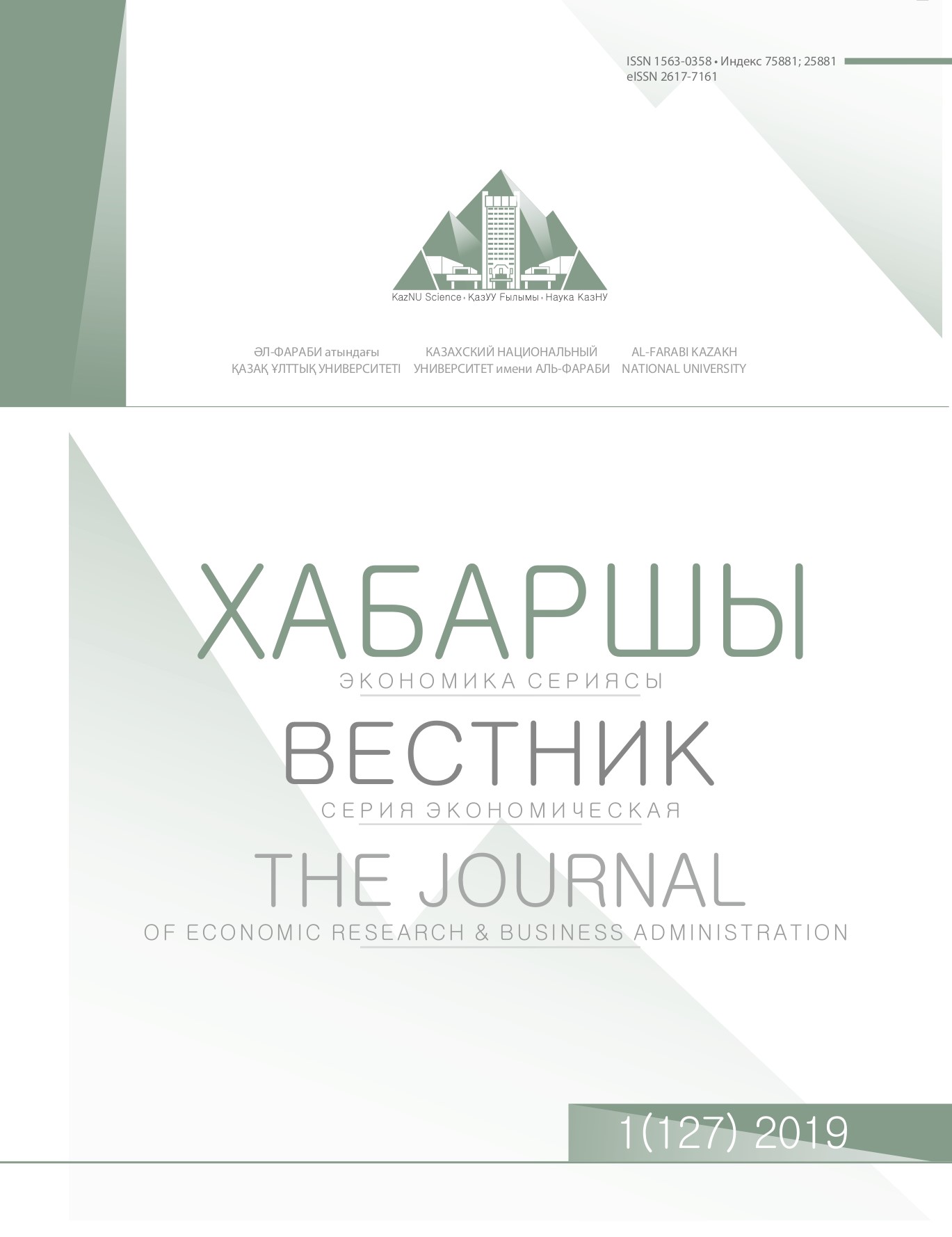Перспективы валютной интеграции в Евразийском экономическом союзе
DOI:
https://doi.org/10.26577/be.2019.v127.i1.18Аннотация
В статье раскрываются особенности и перспективы валютно-финансовой интеграции в
рамках Евразийского экономического союза. Выявлены негативные аспекты, препятствующие
валютно-финансовой интеграции и пути их преодоления. Целью исследования является
выявление степени готовности стран-участниц к введению единой валюты, а также выгод и из-
держек, с которыми они могут столкнуться. Объект исследования – Евразийский экономичес-
кий союз (ЕАЭС), основные экономики которого характеризуются сырьевой направленностью.
Методология исследования. Представленная теоретическая модель объясняет изменение цен
на сырьевые товары, которое возникнут после введения единой валюты. Модель предполагает,
что после введения единой валюты экспортные цены будут снижаться в связи с отсутствием
валютного риска. Тогда объемы экспорта будут увеличиваться, но негативная сторона
заключается в том, что это может принести дополнительную конкуренцию местным компаниям.
В эмпирической части исследования предпринята попытка количественной оценки величины
валютного риска, который в настоящее время присутствует в торговле между Россией и
Казахстаном, являющимися в настоящее время крупнейшими экономиками этого союза. С
помощью регрессии OLS проведены эмпирические исследования, в результате которых был
оценен валютный риск. Практическая значимость заключается в том, что в случае создания
валютного союза на территории стран-участниц ЕАЭС мы можем ожидать понижение цен до
10%, вследствие исключения валютного риска. Однако это не компенсирует негативные
последствия для экономик. Результаты исследования приводят к выводу, что в связи с
отсутствием базовых предпосылок валютно-финансовой интеграции введение единой валюты
не ускорит развитие национальных экономик, а наоборот, создаст дополнительные риски.




